Ivan Tsarevich is a character we all know and love from childhood. Being the protagonist of a huge number of magical stories, he undoubtedly influences events intertwined in their storylines. An uncomplicated hero makes a folklore story interesting due to the immediacy of his character and the peculiarities of speech. In what fairy tales is Ivan Tsarevich? Of course, in a good half of them. A brief summary of these stories, their semantic load, idea and message, as well as features of the image of a young man and other heroes - all of this will be discussed in the article presented to your attention.
The main character of Russian folklore
Many are interested in the question: who and when invented Ivan Tsarevich? Oddly enough, but the character is relatively young, since he firmly entered epics and tales only at the end of the 18th century. Invented by the people themselves, it became its personification, symbol. The prototype is the most ordinary village Vanya-Ivan, from him the folklore character took both positive and negative character traits. Usually he is always the third son of the father-king, in some stories the character has three sisters, performs three tasks each, goes three times with a battle against evil forces. Three repetitions in the tale "Ivan the Tsarevich and the Gray Wolf", "The Princess the Frog" and others are not random. Among the Slavs, three was a sacred number symbolizing development, movement, origin, sources, harmony. In folklore stories, it indicates that you don’t have to give up if something doesn’t work the first time: God, as you know, loves the trinity. Instead, it is necessary to go forward, not to give up, not to lose heart.
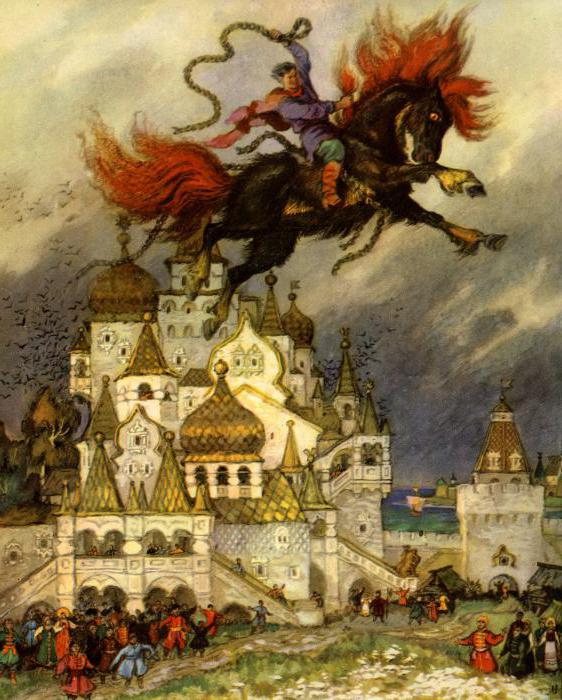
As already mentioned, Ivan Tsarevich is the embodiment of the Russian people themselves. This character is often positive: he fights evil, helps the weak, saves the world from the next
fiery Serpent or
immortal Koshchei. And she always receives a reward for all her good deeds: the throne, the kingdom, a beautiful wife, a magic horse, precious objects. Sometimes he has weaknesses in the form of doubt, disobedience. But other heroes return him to the true path, as evidenced by the proverb from the tale "Ivan Tsarevich and the Gray Wolf": "He took up his tug - do not say that not a dozen." It was with this phrase that the beast answered the hero to his complaints because of a violation of the ban: they say, if you really started something, don’t give up, bring the matter to the end without unnecessary moaning. By the way, Ivan Tsarevich can be a negative character: insidious and evil. Then he is opposed to his brothers or a fishing son. At the end of the story, a bad hero is always shamed and deservedly punished.
Why a fool?
Any fairy tale teaches good and peace. Ivan Tsarevich, being one of its main characters, often becomes the physical embodiment of nobility and honesty. But often he is exposed as a fool: unlucky, absent-minded, inept. For example, P.P. Ershov successfully described this characteristic of Vanya in "The Humpbacked Horse": "My father had three sons. The eldest - was clever kid. The middle one was this way and that. The youngest was a fool at all. ” But magically, it’s the stupidity of Ivan that brings him true happiness, victory, success. That's because fools in Russia were often called honest, open and fair people. They will not cheat, deceive, commit a crime - such a generosity of the soul is incomprehensible to pragmatists. But they forget about retribution and reward for their deeds. Ivan receives wealth and happiness for his efforts, even if he is a fool.
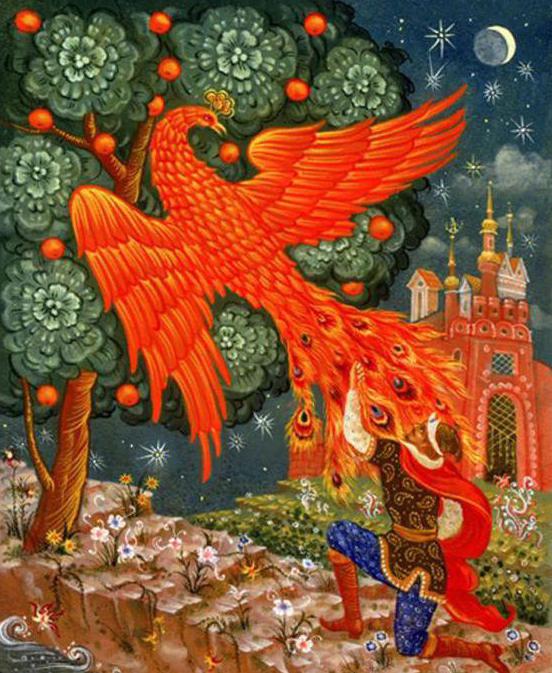
There is another version of this nickname. Folklorists and anthropologists argue that the tradition of giving offensive additions to the name came up with our ancestors - the Slavs. They believed: with negative prefixes they protect their child from evil and misfortune. The nickname became a talisman. Ivan really surprises with his stupid deeds. Agree, going to look for the missing bride or the hidden Snake, he does not rely on the mind, but on intuition. In addition, the character is often straightforward, simple and naive, which also does not speak of his wisdom. But in the end, he rests on his laurels, unlike his "reasonable" brothers.
The character of Ivan Tsarevich
He is positive. The fairy tale hero Ivan Tsarevich is a kind person. He unselfishly helps others, does not think about profit. At the same time he knows how to maintain his own dignity, answering the questions of Baba Yaga directly, without irony, deceit. Like, you first feed and put to bed, and only then we will conduct conversations. Ivan is not afraid of her, he quickly takes the initiative in his hands, showing the strength of character. The character also has diplomatic qualities, he always knows when to ask and when to order.
The image of Ivan Tsarevich in fairy tales is transformed after his journey. And this is not surprising. In ancient Russia, as in other cultures, a trip and wandering around the world is a symbol of pilgrimage, a sacred ritual. During the journey, a person succumbs to dangers, temptations, learning to be wise and patient. Therefore, returning to his native land, he becomes more mature, smarter, thinks more interesting and original. After the trip, Vanya radically changes. Having acquired courageous qualities in the campaign, he retains them. Now he correctly uses his strength and mind, about the possibilities of which he had never even suspected before.
Ivan and his princes
Let's first draw up a conditional plan for the tale. Ivan Tsarevich at first lives - he does not grieve, he lies on the stove. Then events develop depending on the problem that has arisen, for example: the threat of Koshchei, the abduction of the bride, the order of the father-king. The climax is a battle with evil spirits. And the story ends with the triumph of goodness and of Ivan himself. The plot is almost always the same, but the main character may be different.
Depending on his character qualities, the hero receives a bride:
- Ivan is a dreamer. Presented in the tale "Elena the Wise." Reflects on the eternal, plays the harp. Nearby must be Elena the Wise, who, being sensible and intelligent, forgives the lovely eccentricities of her husband, looks at them through her fingers.
- Ivan is a loser. Shown in The Frog Princess. Russian land is wide, but its arrow falls precisely into a deep swamp. Such a character needs Vasilisa the Beautiful, who is not only beautiful, but also resourceful. Thanks to her flexible mind, she not only safely leaves unpleasant situations herself, but also saves her husband.
- Good Ivan ("Marya Morevna"). Shares bread with the poor, saves animals. A hospitable and gentle spouse needs a strict wife. Such is Marya Tsarevna, a strong and strong-willed woman.
Female images complement the main character, "saturating" him with those qualities, the absence of which he sins. Thanks to this, harmony is created in the fairy tale: in its plot and in the relationship between the characters.
"Ivan Tsarevich and the Grey Wolf"
Who are the main characters of this story, it becomes clear only from the name itself. The talking wolf is one of the central characters, which makes this tale not only magical, but also partially “zoological.” The story tells of a family where there is a king and his three sons. The heirs constantly compete not only for the father’s love, but also for the right to receive the throne and wealth after his death. To this end, while executing the parent's order, they try to catch the Firebird that has landed in their garden. Unable to catch the feathered beauty in place, they went in search of her. The younger, Ivan, meets the Gray Wolf, who eats his horse. At the same time, the animal begins to serve the prince, fulfilling his instructions: first, he turns into a Firebird, then into a gold-maned horse and Helen the Beautiful. By the way, the latter also ordered the presentation of the restless father. Unfortunately, the envious brothers betray Ivan, taking away the princess and the Firebird from him. But the wolf comes to the rescue without any delay - everything falls into place.
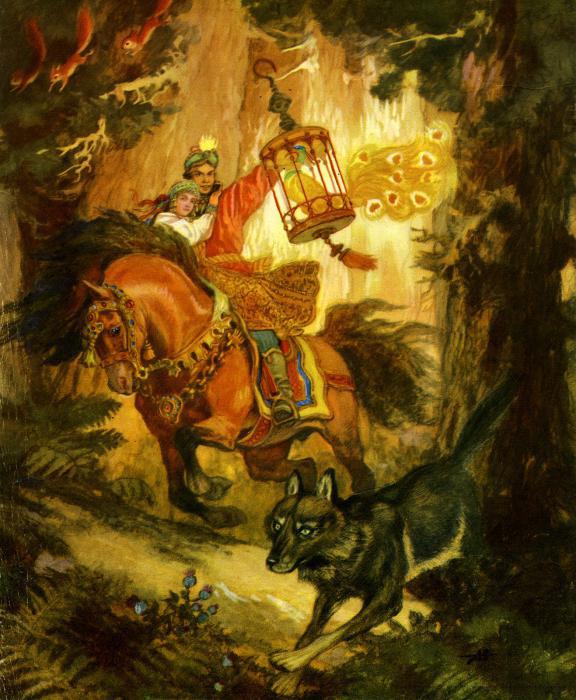
The tale "Ivan Tsarevich and the Gray Wolf" is one of the most famous in Russia. Based on her motives, cartoons and films were shot, performances were staged. Even the paintings are painted: for example, Vasnetsov’s masterpiece under the same name. The main character - the wolf - is shown here on the positive side: he is faithful, honest and noble. But the brothers, although they are of royal blood, are depicted as negative characters: insidious, envious. Not wanting to be seen as losers before their father, they even went on a betrayal. A fairy tale teaches readers one simple truth: evil gives rise to the same negative, good always returns handsomely. In addition, not everything in life goes to perseverance and work: sometimes you need to use cunning and ingenuity.
"Princess Frog"
The main character with whom this tale introduces us is Ivan Tsarevich. A brief summary of this story is familiar to each of us since childhood. At first, the main character seems a failure: his arrow falls into the swamp, and he is forced to marry a frog. But in fact, he was very lucky. It turned out that his wife is an enchanted Vasilisa the Beautiful. She is beautiful and very smart. The girl performs all the tasks-tests of the king skillfully and with dignity, bypassing her sister-in-law - the husband of older brothers. It is clear that such a clever woman could not help but be noticed by the evil Koshchei, who steals the girl. Ivan goes in search of her: on the way, he meets many animals that he helps, such as a pike, a drake, a hare and a bear. At first he wants to eat them, but then he regrets and bestows life on everyone. For this, the animals at one time will thank the savior - they will help him overcome Koshchei and save the bride.
Like the Tale of Ivan the Tsarevich and the Gray Wolf, this story teaches us love, including animals. It shows that our smaller brothers are able to help in response to care and guardianship. The story demonstrates that compassion is always rewarded. At the same time, real evil - in the form of Koschei or other evil spirits - will be justly punished. The modesty and purity of Vasilisa defeat the arrogance and envy of her sister-in-law. A fairy tale teaches that a person is always obliged to achieve his goal. Ivan overcomes many difficulties on his way, but the stubbornness and determination of the prince are rewarded. As a result, he saves Vasilisa: they live happily ever after.
"The Tale of Rejuvenating Apples and Living Water"
The plot of a magical story is typical. The Tale of Tsarevich Ivan and the Gray Wolf is very similar to this story. She also has a king and three sons, who are trying with might and main to please his father. Father, being in old age, decided to regain youth and regain immortality. To achieve his goal, he needed rejuvenating apples and living water. And whom did he send for them to the distant kingdom? Of course, the heirs. At first, the elder brother Fedor went in search, but he managed to get captured by a cunning and crafty girl. Then the middle son, Vasily decided to try his luck, but the same fate befell him. There was no hope for the younger, a true fool of the kind. But the priest had no choice but to entrust Ivan with a similar task.
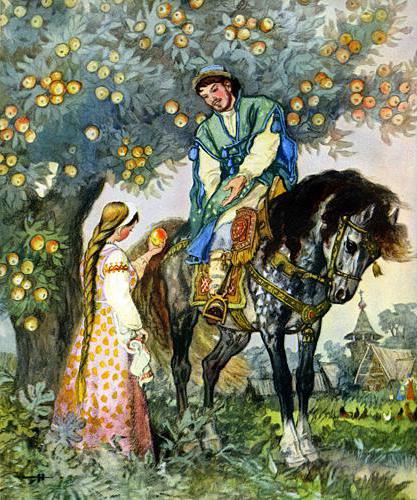
The prince at a crossroads intuitively made the right choice, so Baba Yaga helps him reach the magical garden under the protection of Sineglazka. Then Ivan plucked apples, poured water and went home. Sineglazka caught up with him, but instead of being punished for the theft, the prince received her forgiveness and love in addition. On the way, he freed the brothers, then they betrayed the prince. All his merits were appropriated by cunning relatives. But the Nagai Bird, Sineglazka’s faithful friend, freed him from the abyss and helped restore justice. Ivan married Sineglazka and lived happily in her kingdom. The main idea of "Tales of Rejuvenating Apples ..." - betrayal does not lead to anything good. Youth cannot be eternal; it is impossible to gain immortality. The main thing is to live the measured years honestly and nobly. And for selfishness everyone will get what they deserve.
"Marya Morevna"
In what fairy tales is Ivan Tsarevich? In addition to the above, the character is present in the magical story about Marya Morevna. At first, after the death of his parents, he marries his sisters - for Oryol, Falcon and Raven. Then he meets the beautiful warrior girl Marya, whom he will soon marry. But, breaking the ban of her beloved, Ivan loses her - the evil Koschey kidnaps the girl. In search of a wife, the prince is subjected to numerous trials, including death. Animals and brother-in-law come to his aid: in the end, the prince copes with the tasks of Baba Yaga, defeats Koshchei and frees Marya.
The idea of the tale is this: obedience is the key to a calm and harmonious life. After all, a violation of the ban often leads to numerous troubles. History teaches nobility, patience, determination - they help to cope with difficulties. In the end, good will triumph. The main thing is to be able to repent in time, admit a mistake and do everything to correct what you have done. And also gain valuable experience so that you never again make the wrong decisions.
"Sea King and Vasilisa the Wise"
The Russian folk tale "Ivan Tsarevich and the Gray Wolf", as well as other magical stories tell us that the line between good and evil is very thin. These two forces always interact, feed each other. Without light, there are no shadows, the latter add zest to worldly life. Therefore, the story of "Sea King and Vasilisa the Wise" also carries this idea through the whole plot. It tells of a priest who was captured by a water lord. By negligence, he promises to give back what he does not know at home. As luck would have it, this is a little son born in his absence. Over time, a little older Ivan goes to the Sea King, but along the way he meets an old woman who tells how to earn the favor of the youngest daughter of a monster and thereby be saved from death.
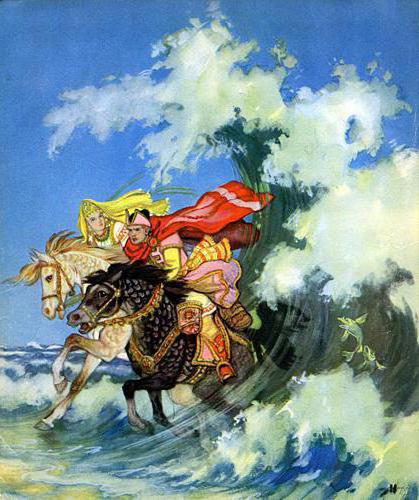
Once under water, the prince courageously passes the test - a young princess helps him in this, who later becomes his wife. Young people successfully escape from the deeps of the sea to their homeland to Ivan, where they remain to live happily and richly. What does a fairy tale teach? Ivan Tsarevich at first rudely answers the old woman, then he corrects himself and receives valuable advice. The first thing that history brings to us is to respect the elders, their wisdom and life experience will help in any difficult situations. The second thing the fairy tale teaches is to love and value your land. Having received everything you dream in a foreign land, you will soon soon yearn for your native places. There is nothing more expensive than the Fatherland and your own family.
conclusions
Positive and negative characters are united by a fairy tale. Ivan Tsarevich is in most cases a positive hero. In the story “Crystal Mountain”, he managed to correctly divide the prey between the animals, for which he was rewarded with the power of transformation into a falcon and an ant. Having acquired miraculous abilities, he managed to conquer the princess and defeat the terrible snakes. As in all of the above stories, in this tale he shows his honesty, justice, ingenuity. Thanks to the good qualities of character, he is strong in overcoming any obstacles.
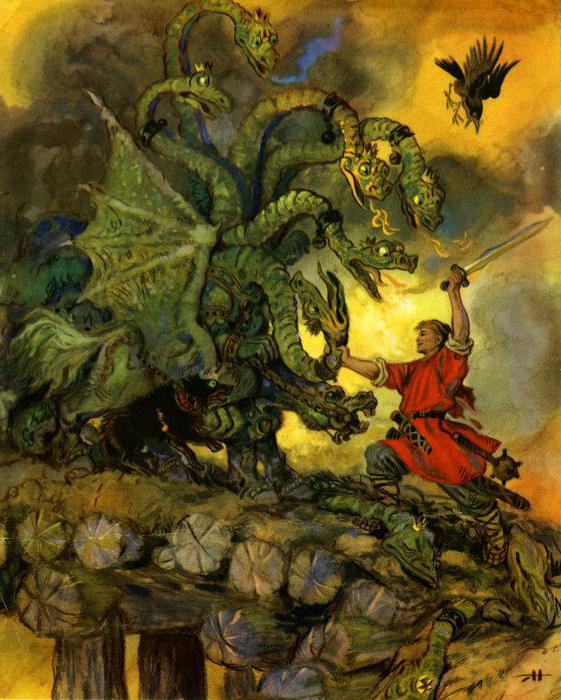
Therefore, any fairy tale teaches little readers openness, sincerity. The animals represented in it are the same people. Through animal images, folk tales show how one should not relate to relatives, friends, colleagues, and simply strangers. Any fairy tale suggests that justice will triumph. But for this you need to make efforts, ingenuity, show endurance and patience. Events in every magical story may not be ordinary, but they are closely intertwined with everyday situations of real life. Vivid images help us discern the truth in cruel reality, convict a lie. They teach people to be hardworking, kind and loyal, they warn against greed, envy and duplicity.